Interview by Ian Dearden
‘It was the best of times, it was the worst of times, it was the age of wisdom, it was the age of foolishness, it was the epoch of belief, it was the epoch of incredulity, it was the season of Light, it was the season of Darkness, it was the spring of hope, it was the winter of despair…’
In the midst of a world wide pandemic that has brought the music industry (or, at the least, the live musical performance component of it) to its knees, those lines from the beginning of ‘A Tale Of Two Cities’ by Charles Dickens resonate presciently for singer/songwriter Sam Buckingham. With an established career based on a clutch of solo albums and EPs, as well as a couple of exquisite collaborations, Sam has established herself in the Byron Bay community, using that as a base to tour, perform local café and bar gigs, and to continue her side hustle as a yoga teacher. That business model has come under extreme pressure, with COVID-safe gigs just starting to tentatively resume after a 6 months hiatus.
Sam’s answer to this dilemma has been multi-pronged – running online concerts, initially weekly; drawing on the connection with and support of her patrons on Patreon (more of that later); and engaging extensively in pre-production (and subsequent recording) of her new album, which sees her, for the first time, take on the production reins, and exploring a change of musical direction from the folk/country/Americana stylings of her current body of work, towards a more pop sound.
Let’s step back, though, and place some scaffolding around Sam’s career. Sam recalls growing up as one of four girls in Normanhurst/Hornsby in Sydney’s north. As a child, she always sang and performed, putting on shows for the family from the age of five, making them sit down and listen. Any interruption resulted in Sam starting the show all over again!! Clearly, this was an excellent training ground for a career spent substantially in public performance – which Sam describes as a need in her life for as long as she can recall.
And yet, despite her life long love of, and passion for music, Sam did not enjoy music at school. She not only quit music studies because it was ‘boring and painful’ but despite achieving well at school, and topping English, she left in Year 10. Even the briefest of conversations with Sam reveal a woman who is educated, well read, thoughtful and intelligent – yet as a teenager she was bored and started wagging classes regularly in her last year of school. She had already started to write songs and could not see the point of continuing an education experience that she was not enjoying and had little to offer her.
Sam grew up with a mother who was a classically trained singer, pianist and choir conductor, and a father who, although not himself a musician, was a ‘mad music fan and audio head’, deep into the history of music. It was Sam’s dad who introduced her to popular music, while her mum, who was more classically based, was always singing and playing piano at home and musically encouraging. Sam also has musical artists and performers on both sides of her family. On her mum’s side, Sam has aunts who are singers, a grandfather who was an actor, and an uncle who is a classical guitarist. On her father’s side, Sam also has an aunt who sings, and cousins with various musical involvements including professional opera singing, and playing and teaching brass and woodwind.
As Sam describes it, ‘there was enough happening [musically] on both sides of the family that it came and got me’. When she announced that she was ‘leaving school and just wanted to make music, my parents were okay’, and not only did not try to dissuade her, but never questioned her choice of career.
As well as leaving school, Sam also left home, started playing gigs, paying her own bills and figuring out how it all worked. There were of course, other jobs to earn a living, but as she recalls, ‘there was no doubt that I felt called to do it [follow a career in music] and that I could do it, if I chose to do so.” Along the way, there was a stint at TAFE doing a music industry course. Sam knew, even at this young age, that music was what she wanted to do with her life, she just didn’t know ‘how the hell I was going to do it!’ There were, she says, many years of muddling along, trying to work it out, ‘without a clear path, but a vision of what I thought was possible.’
Although Sam had always sung, the catalyst to becoming a songwriter came with a Christmas present from her uncle when she was 14, of a hand-me-down classical guitar. ‘I’d just started putting music to poems that I’d written, and they just happened to sound like songs.’ Sam doesn’t recall any specific decision to be a singer/songwriter, but recalls that ‘it was so natural for me to do that [write songs], that I just kept doing it, and I kept knowing that I wanted to keep doing it.’
Sam’s formal musical education lasted only a few weeks – with guitar, she didn’t want to learn chords, or learn scales, or to practice, she just wanted the tools with which to write songs. There were also a few voice lessons, but again, they really had nothing to offer her as a young aspiring songwriter and performer – as she says, ‘that wasn’t my way of learning, I have to be in it, doing it, that’s the only way that makes sense to me to learn.’ With performance, she muses, ‘I never went to a class to learn how to stand on stage and perform, I just stood on stage and shat myself – and figured it out.’
It’s clear to Sam that the voyage of discovering the skills of performance is very much experiential, taking intellectual knowledge and integrating it into your body. Sam is adamant that ‘if someone just told you everything right at the beginning when you’re about to start, it’s too much…you miss all the nuances of it …there are so many different scenarios you come across for any given gig at any given place…you have to integrate it into your body, and that’s why I love that way of learning, and that way of life. Until you’ve embodied it, you don’t really know it.’
As an adult learner, Sam sees her learning process in two steps – firstly to identify her ‘secret sauce’ and really hone those skills, give herself a roadmap for what she can be in the world, and then to look fill in the gaps. As she sees it, the next step then is ‘to magnify even more what you’re great at, what makes you you, and what makes you the artist that you are.’ Looking back, she recognises that where she is now as a performer is a result of years and years of ‘writing and recording and performing and learning … and the only reason I feel great at what I do is the years and years of just honing in on what feels right, what feels natural, what I know people respond to in me – and then saying, I’ve got that down, now how can I make that better.’
The first album (Daydreamer)
After leaving school at 16, Sam acquired some music industry skills at TAFE, where she also recorded her first EP, “Bittersweet”. Sam started gigging around Sydney, playing mainly originals in bars, music venues and ‘anywhere that would have me.’
By the age of 21, Sam was working in a retail clothing store, which she hated – to the point of ringing her father every morning for weeks as she was opening the shop, crying, and announcing to him, “I was not put on this earth to sell these fucking clothes.” Eventually her long suffering dad challenged her distress with a clear response – what are you going to do about it? And so she quit her job, went and played a gig that night, and announced that she’d ‘just quit my job in a shitty clothes store because I wanted to play music for the rest of my life, as my job.’ As Sam describes it, ‘It just so happens that there was someone in the audience…who worked in banking and was an investor and he came up to me at the end of the gig and said “I admire your courage, I would like to give you a gift to help you in your music career.”’ Extraordinarily, Sam says, ‘There were no strings attached, it was all above board and completely altruistic, and he actually funded my first album. It was pretty crazy!”
Around the same time, Sam met a producer who liked her songs and expressed an interest in producing her. All of this coalesced at an age and stage in her life, Sam points out, when ‘I had no idea what I was doing and I had no idea of what sort of artist I wanted to be.’ In hindsight, Sam doesn’t feel that the first album is reflective of the artist she is now, in any way whatsoever. In retrospect, she feels that her lack of understanding of what she wanted from the process meant that others got to decide what the songs would sound like and how they would be recorded. However, rather than expressing regret, she now looks back at the process and appreciates how much she learnt both creatively and in terms of the finance and business aspects of her career. In short, Sam believes, it helped her to work out what sort of artist she wanted to be, what sort of records she wanted to make, and how she was going become that artist. And she very quickly worked out that no-one was ever going to hand her a cheque like that again, so she had to work out not only how business worked, but more specifically, how the music business worked and her role in it.
Since that first album, Sam has pursued various avenues for funding her career, including grants, crowdfunding opportunities, record sales and licencing deals as well as gigging relentlessly – but she now feels she has a much better handle on how to maintain a sustainable career. In particular, she has identified the importance of building business relationships, and a relationship with her fans, and she readily acknowledges it’s been a huge learning process along the way. For Sam, that process has seen her becoming intensely involved in seeking to build and grow her business from a creative and sustainability point of view, while maintaining creative control, and working on her craft as a writer.
Sam scored a distribution deal with MGM for ‘Daydreamer’ which got the album into stores and online. She also sold CDs at gigs, but, as she explains, ‘I didn’t understand the concept of marketing my music and I didn’t know anything about the music industry. I honestly thought all I had to do was record an album, have a release date and everyone would know about it.’ She goes on to point out that there was no social media at the time, she didn’t have a website, didn’t know anything about music street press nor about radio airplay, had no manager or booking agent – so the album became a product that she could sell at gigs and fans could take home, but that was it. These days, Sam notes, she has a publisher (Alberts, now BMG), a booking agent, and MGM continue to handle her distribution, but she remains self-managed, and her fans, she says, ‘are really her label – and I like it that way.’
The second album (I’m A Bird)
Sam now identifies the time between that first album, ‘Daydreamer’, and preparing for her next album, ‘I’m A Bird’, as a period of reassessment and coming to terms with the economic realities of the music industry. Looking back, Sam keenly appreciates that the first album, although it didn’t actually break even, provided a stepping stone, brought in a lot of new fans and enabled her to reach out to those fans to help fund the next album. In artistic terms, Sam sees a substantial progression after the first album, for which ‘you spend all of your life writing the songs,’ and having ‘cleared that cycle’, was able to use that experience as a stepping stone to produce the fresh body of work that became the second album. That cycle did take 5 or 6 years, a bunch of gigs, lots of touring, music festivals, house concerts, a range of other (non-musical) jobs, living, as well as ‘dating a few people and having my heart broken’, Sam says, but out of that experience emerged the songs for her ‘I’m A Bird’ album which was released in 2013.
The key to recording and releasing ‘I’m A Bird’ was the advent of crowdfunding – pre-selling the album to fans in order to fund upfront the recording, mastering, pressing and releasing process. Sam was aware that crowdfunding had taken off in America, but knew of only a few artists in Australia who had gone down this path. However, Sam as observes, ‘as soon as I heard of crowdfunding, it made so much sense, I didn’t even have to question it, of course this is how I can make my music happen.’ Sam looked at what other artists had done, gauged their fan bases against her own, priced out what the album was going to cost, and ‘went for it’. She describes the process as ‘so nerve-wracking’, but was comforted by the reaction of the fans. It was a delightful surprise – ‘I put out an email, this is what I’m doing, here’s the link, and almost instantly, pledges started coming through.’ Although there were ebbs and flows in the campaign, Sam said that she always knew, once the process started, that she would hit the target. As it turned out, Sam had signed a publishing contract with Alberts which provided her with free studio time, so her budget covered most (but not all) the costs of the producer as well as recording, mixing, mastering, pressing and releasing the album.
However, what was not covered by the crowdfunding for ‘I’m A Bird’ was the contributions of some of the key musicians on the album, including Sam’s long time friend and multi-instrumentalist Kent Eastwood, who ended up playing for free. Sam notes that ‘I’m A Bird’ became a product that got her work, could be sold at gigs, and helped her progress her career – and so she could not again countenance having friends such as Kent working on her albums for no reward. That prompted her to contemplate the bigger issue – as an artist, how could she progress her career, make an income from music, but still pay all the contributors fairly.
Patreon
This lead Sam to identify a business model for her career that facilitated planning ahead, budgeting for major career projects including future albums, and appropriately funding those projects. In short, she decided that she wanted a business model that did not have to rely on not paying other contributors in order to be viable. What followed was Sam’s subsequent involvement with Patreon, an ecosystem that enables ‘many, many artworkers to survive and thrive’, while making sure that everyone gets paid. It’s a simple perspective, Sam believes, encapsulated by the question: ‘How much do I value these people, their skills and their work?’ The key, she identifies, as an art worker, is to value your own work, and then to see and recognise the value that others bring to that work, and pay them accordingly.
So what, exactly, is Patreon? From the patreon.com website, here’s a brief but helpful explanation:
Patreon is a membership platform that makes it easy for creators to get paid.
For creators, Patreon is a way to get paid for creating the things you’re already creating (webcomics, videos, songs, whatevs). Fans pay a few bucks per month OR per post you release, and then you get paid every month, or every time you release something new.
Punk cabaret singer/songwriter Amanda Palmer is undoubtedly Patreon’s highest profile creator and her 15,000 patrons fund on a monthly basis an extraordinary output of music, art, videos, publications and podcasts. Amanda’s example clearly demonstrates that tapping a worldwide network of ongoing financial supporters can support a broad range of creative endeavours. Sam watched Amanda’s experience with Patreon and got to meet and discuss it with her, which helped sort out in Sam’s mind why it was indeed the ideal platform for her own career.
For Sam, those heady numbers Amanda Palmer commands are still some way off – but Patreon is freeing her to think more about the economics of the music business, and enables her to make more clear sighted and pragmatic decisions about gigs and touring opportunities, which, often enough, lose money rather than making a positive financial contribution. Again, like the concept of crowdfunding, Sam says that Patreon made sense for her career straightaway.
As it turned out, from 2013, Patreon provided the opportunity for Sam to travel the world, be fed, and write songs for the follow up album to ‘I’m A Bird’, by sharing the song demos with her patrons. The songs she wrote with that support eventually ended up on Sam’s 2017 album, ‘The Water’. Sam is keenly aware that Patreon enables her to be supported in a life and a long term, sustainable career that she can now run from anywhere in the world, although for the time being, it’s the Byron Bay area of NSW that has won her heart as a home base. To Sam, the constant contact with fans, together with the connection and community that flows from that contact, is the key ingredient of her commitment, as a content creating artist, to the Patreon platform. The next step for Sam is to scale up her Patreon following so that she can, in turn, tackle bigger projects and potentially support herself through Patreon income. There is, Sam believes, so much more that she can do with the platform, and she is busily working through potential strategies for expansion.
The business of music
Having time to think, plot and plan has brought Sam to a stage in her career where, although she remains the final decision maker on all matters in respect of her career, she loves accessing the ideas, insights, opinions and expertise of others. Sam enjoys the process of being challenged in discussions about ideas, opportunities and strategies and values being pushed outside her comfort zone. At the same time, Sam is conscious of the importance of tuning into her own instincts, mindful that when she hasn’t done so in the past, she’s made ‘some pretty bad mistakes’. But, she says, there is always someone she can call to discuss relevant issues and problems requiring solutions.
Sam is also a fan of checklists, which she believes help her when she gets stuck, as sometimes happens in the decision making process. A particularly helpful checklist for Sam is ‘Opportunity vs Temptation’, but there are a range of other checklists she uses to help her separate the emotional decisions from the practical or financial decisions. Sam is acutely aware that she is someone who has a lot of big ideas, a lot of enthusiasm for those ideas, and is good at executing them to a certain degree, but her standard operating system does not work in a linear way, so she needs other people to keep her focused on and get the most out of the task in hand. In short, she describes herself as a master collaborator.
For Sam, the big challenge in running the business of ‘Sam Buckingham’, is all the unpaid work she has to do, in order to get paid for what she actually does i.e. the music. However, if she doesn’t do it, then she has to pay someone else to do that work. As she acknowledges, that is a cost/benefit analysis that she has to assess constantly, but she strongly believes that it is the process of collaboration that helps her to make the best decisions for her career. For example, to access marketing expertise, Sam notes that it’s necessary for her to allocate funding, which requires yet another budgeting spreadsheet to keep a handle on what is required. And as a self-managed artist, after all the consultation and collaboration, she finds herself having to constantly juggle all the opportunities, ideas and strategies in her head so that she can plot a pathway to furthering the various aspects of her career. Sam feels, however, that it’s only in the past couple of years that she’s been able to find the best collaborators and do the best work of her career. In particular, she is grateful for the collaboration with her booking agent, who is not only committed to the primary task of booking gigs, but is invested in her future as a career artist.
Sam’s story continues in Part 2, which will follow shortly.
You can find out more about Sam at www.sambuckingham.com
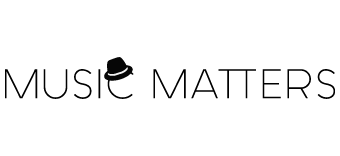

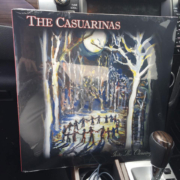
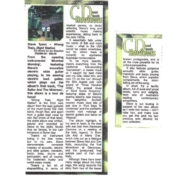
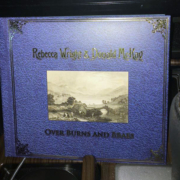
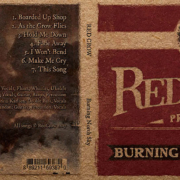
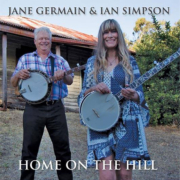
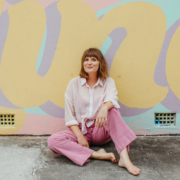


Leave a Reply
Want to join the discussion?Feel free to contribute!